
The Nymphaeum at Leptis Magna
Marvel at the Nymphaeum in Leptis Magna, a stunning example of Roman architecture and engineering in ancient Libya.
The Nymphaeum in Leptis Magna is an ornamental fountain built in the 3rd century AD during the reign of Emperor Septimius Severus. Decorated with marble columns and statue niches, it served as both a visual spectacle and a crucial part of the city's water management system.
A brief summary to The Nymphaeum
- J7PV+762, Leptis Magna, LY
Local tips
- Wear comfortable shoes for walking on uneven terrain while exploring the ruins.
- Bring water and sun protection, as the site offers limited shade.
- Consider hiring a local guide for insights into the history and significance of Leptis Magna.
Getting There
-
Walking
From the entrance of the Leptis Magna archaeological site, walk straight down the main path towards the ruins. Keep the amphitheater to your left. After about 300 meters, take the right path towards the marketplace (the forum). Continue straight for another 200 meters; the Nymphaeum will be on your right, past the Temple of Augustus.
-
Public Transport
From Tripoli, take a bus or shared taxi to Al-Khums (Homs), the modern town near Leptis Magna. From Al-Khums, hire a local taxi to the archaeological site. The Nymphaeum is located within the main site area, a short walk from the entrance. Bus/taxi fares from Tripoli to Al-Khums typically cost around 10-15 LYD. A local taxi from Al-Khums to Leptis Magna should cost approximately 5-10 LYD.
Discover more about The Nymphaeum
Iconic landmarks you can’t miss
The Arch of Trajan
0.2 km
Discover the Arch of Trajan in Libya, an iconic historical landmark showcasing ancient Roman architecture and history amidst the Severan Forum.
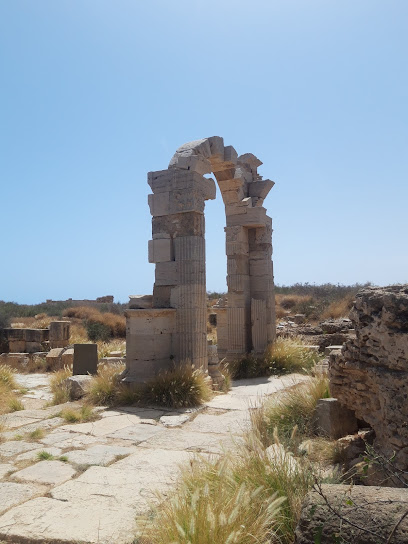
Severan Basilica
0.2 km
Discover the architectural majesty of Severan Basilica in Leptis Magna, a historical landmark that showcases the grandeur of ancient Roman civilization.
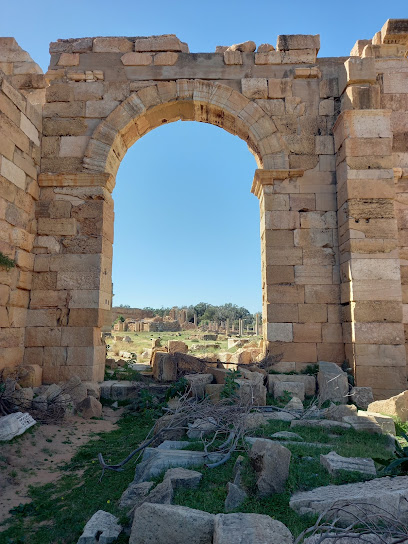
Monument of Gavius Macer
0.2 km
Discover the Monument of Gavius Macer in Leptis Magna, a captivating symbol of Roman history and architectural brilliance in Libya.
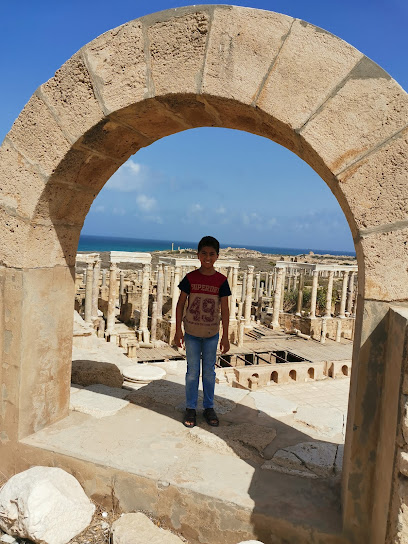
Arch of Tiberius
0.3 km
Discover the grandeur of the Arch of Tiberius in Leptis Magna, a magnificent historical landmark showcasing Rome's architectural heritage.
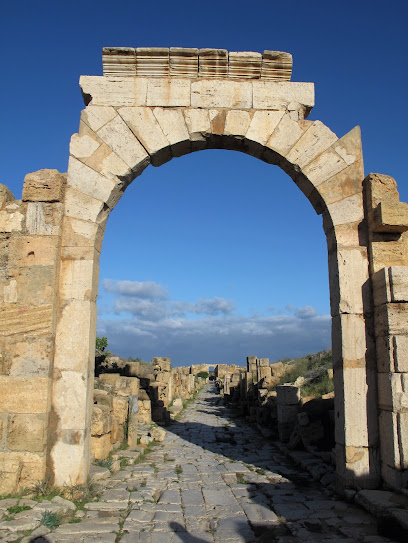
Temple of Jupiter
0.4 km
Explore the Temple of Jupiter in Leptis Magna, a stunning historical landmark showcasing the grandeur of ancient Roman architecture and culture.
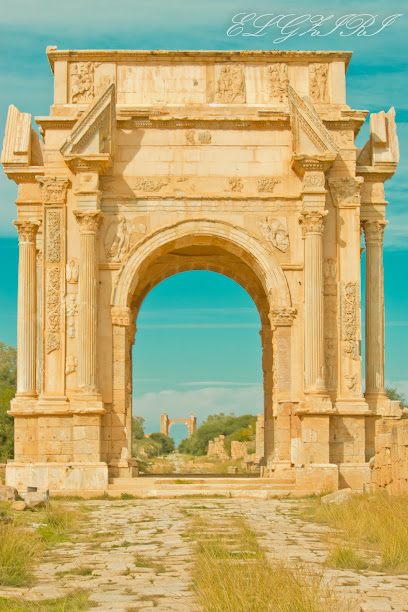
البوابة الغربية
0.7 km
Discover the rich history and stunning views at the Western Gate of Khoms, a must-visit historical landmark in Libya.
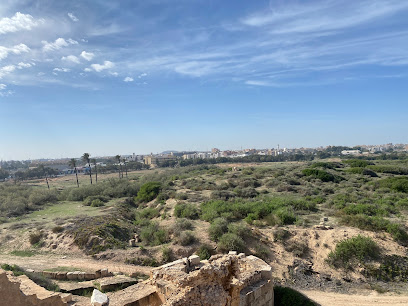
البوابة الغربية
0.7 km
Explore the historical charm of Khoms at the captivating Western Gate, a symbol of Libya’s rich cultural heritage and breathtaking coastal views.
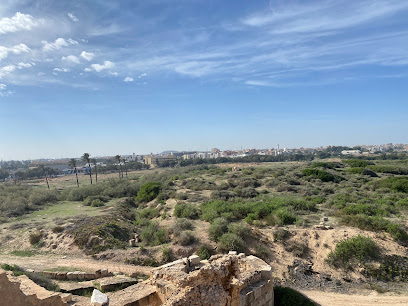
Leptis Tower برج لبدة
0.8 km
Explore Leptis Tower, a historical gem in Libya, showcasing the grandeur of Roman architecture and the rich history of Leptis Magna.
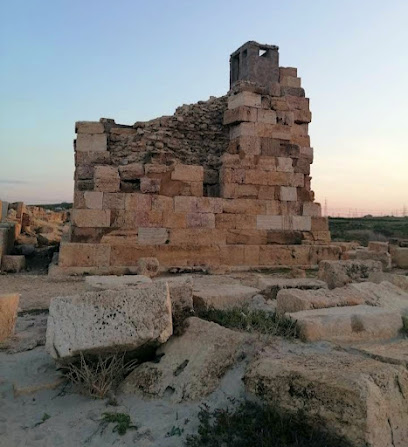
The Amphitheatre of Leptis Magna
1.6 km
Discover the ancient marvels of Leptis Magna, an exquisite historical landmark showcasing the splendor of Roman architecture on the Libyan coast.
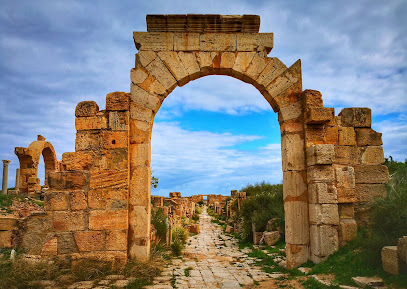
Hamada mosque
77.3 km
Explore the serene beauty and rich cultural heritage of Hamada Mosque in Misrata, a must-visit destination for travelers seeking spiritual and historical insights.
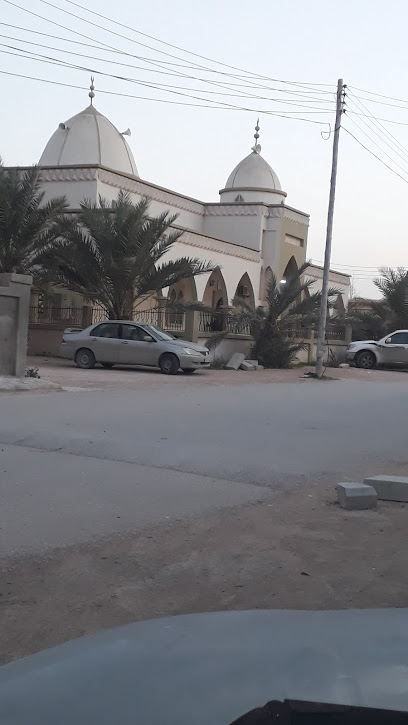
Misrata International Airport
79.7 km
Discover Libya through Misrata International Airport - your gateway to stunning landscapes, rich history, and vibrant culture.
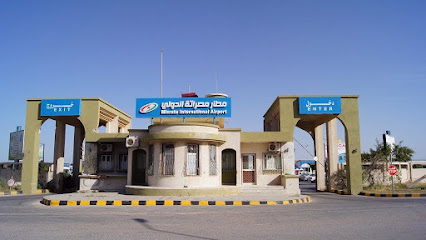
Sewehli Sports Club
80.3 km
Explore Sewehli Sports Club in Misrata, where local soccer passion comes alive amidst spirited matches and community camaraderie.
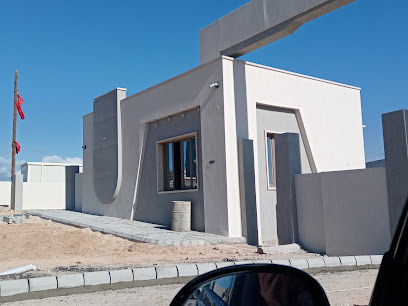
Dees Mosque
80.7 km
Discover the serene beauty of Dees Mosque in Misrata, an architectural gem reflecting Libyan culture and spirituality.
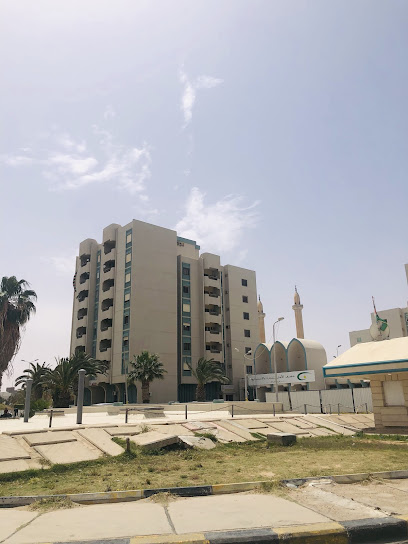
LIBYA MISRATA
83.1 km
Discover the vibrant community center of Misrata, where culture, hospitality, and local traditions come alive in the heart of Libya.

Raidat
87.2 km
Discover the perfect blend of comfort and convenience at Raidat Apartments in Misrata, where modern amenities meet Libyan hospitality.

Unmissable attractions to see
Hadrianic Baths
0.2 km
Discover the grandeur of the Hadrianic Baths in Leptis Magna, a remarkable glimpse into Roman luxury and social life.
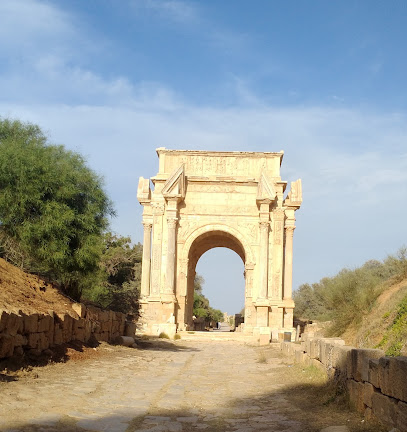
Severan Forum
0.2 km
Explore the ruins of the Severan Forum in Leptis Magna, a testament to the grandeur and architectural prowess of the Roman Empire.
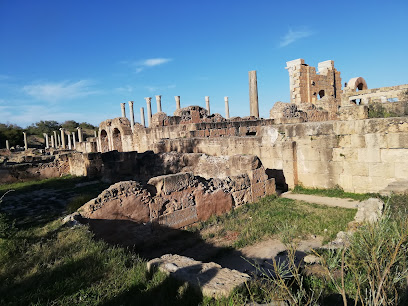
Leptis Magna
0.2 km
Discover the stunningly preserved Roman city of Leptis Magna, a UNESCO World Heritage site on the Libyan coast. Explore ancient history and architecture.
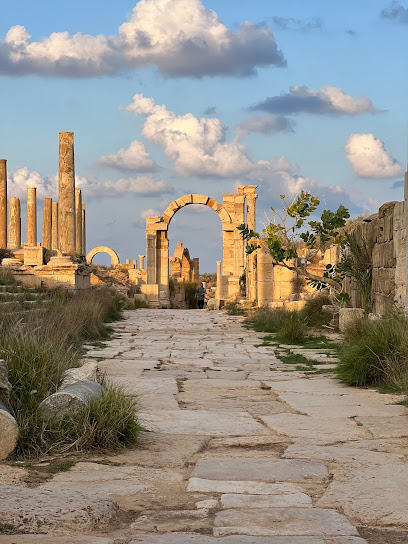
Colonnaded Street
0.3 km
Stroll through history on Leptis Magna's Colonnaded Street, a stunning example of Roman architecture and urban design from the reign of Septimius Severus.
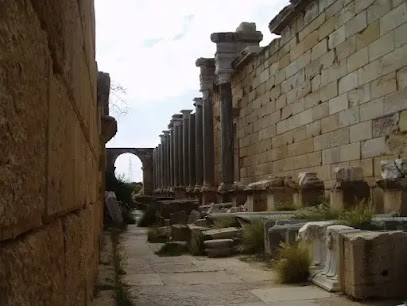
Byzantine Gate
0.3 km
Explore the Byzantine Gate in Leptis Magna, a testament to the city's enduring history and architectural transformations under Byzantine rule.
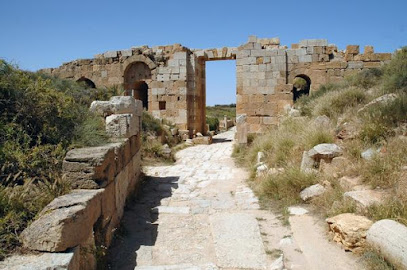
Arch of Septimius Severus
0.4 km
A monumental Roman arch in Leptis Magna, Libya, honoring Emperor Septimius Severus and showcasing the grandeur of the Roman Empire.
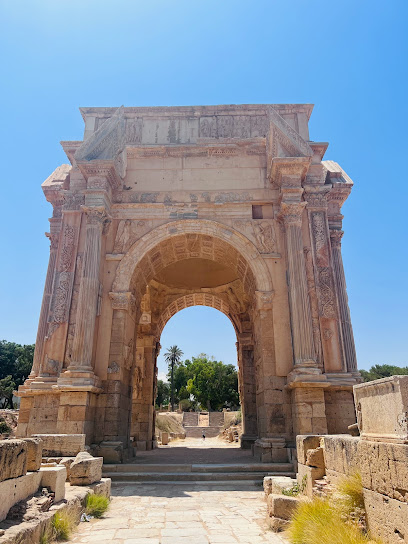
Old Basilica
0.4 km
Discover the Old Basilica in Leptis Magna, a historical landmark that showcases the grandeur of ancient architecture and rich cultural heritage.
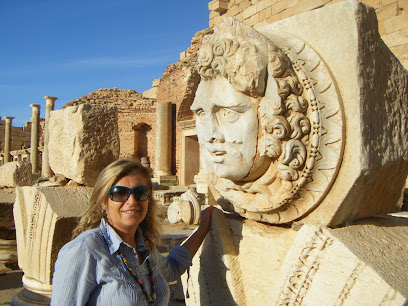
Leptis Magna Museum
0.4 km
Explore the ancient wonders of Leptis Magna Museum, where history and archaeology come alive in Libya's breathtaking heritage.
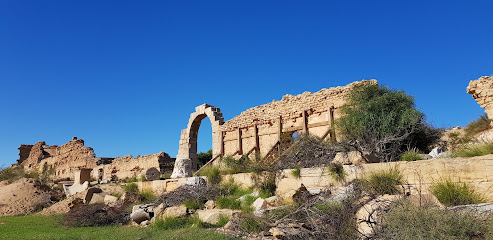
Hercules Temple
0.5 km
Explore the Hercules Temple in Khoms, Libya: a journey into Roman history and architectural grandeur in North Africa's captivating landscape.

Leptis Magna Roman Ruin
0.6 km
Discover Leptis Magna: An ancient Roman city in Libya with remarkably preserved ruins, grand architecture, and a rich history on the Mediterranean coast.

البوابة الغربية
0.7 km
Discover the historical charm of Khoms at the Western Gate, a landmark offering cultural insights and breathtaking coastal views.
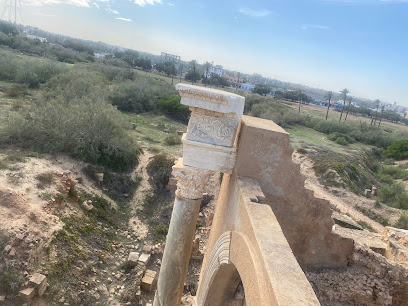
Barco lebda - باركو لبده
0.8 km
Explore the ancient ruins of Barco Lebda, a historical landmark in Leptis Magna, where history and nature beautifully intertwine.
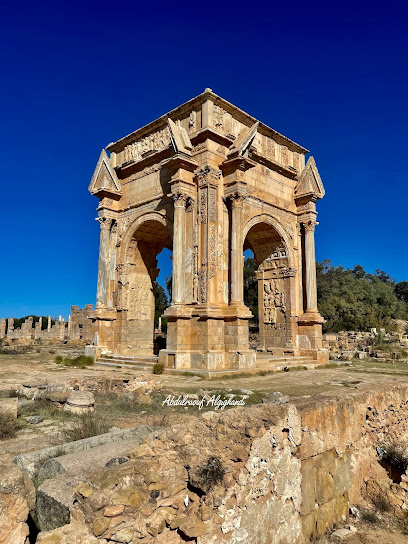
Lighthouse of Leptis Magna
0.9 km
Explore the Lighthouse of Leptis Magna, an ancient Roman landmark with stunning coastal views and rich maritime history in Libya.
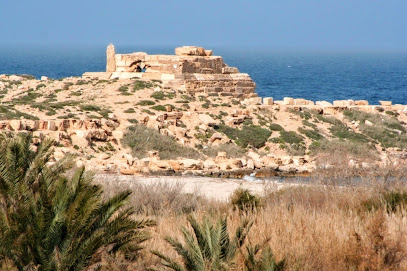
The ancient dam and wall of Leptis Magna
1.4 km
Discover the ancient dam and wall of Leptis Magna, showcasing Roman engineering and the grandeur of a civilization near Khoms, Libya.
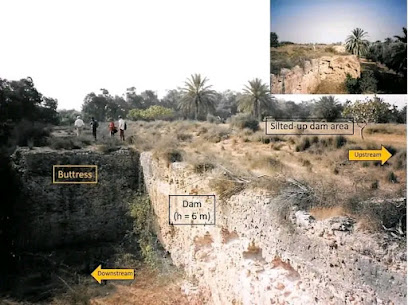
Circus Maximus of Leptis Magna
1.6 km
Explore the ruins of the Circus Maximus in Leptis Magna, a testament to Roman grandeur and thrilling chariot races of the past.
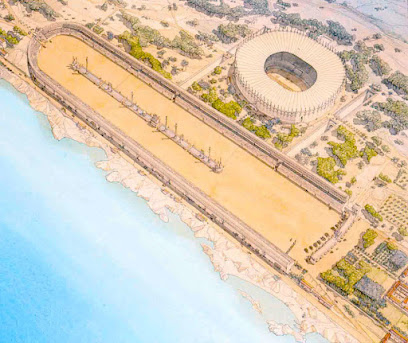
Essential places to dine
مطعم آثار لبدة
0.2 km
Savor authentic Libyan cuisine at مطعم آثار لبدة amidst the historic splendor of Leptis Magna.

مقهى ومطعم لبدة
1.1 km
Savor traditional Libyan cuisine at مقهى ومطعم لبدة in Leptis Magna – where local flavors meet rich history.
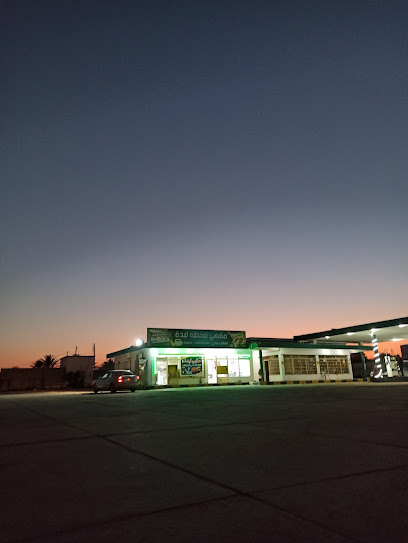
مطعم frites
1.1 km
Experience authentic Libyan fast food at مطعم frites in Khoms – where flavor meets convenience.

Pizza kayan
2.1 km
Discover delicious pizza at Pizza Kayan while exploring the ancient wonders of Leptis Magna in Libya.

مقهي العماد
2.2 km
Discover مقهي العماد in Khoms - A delightful breakfast spot offering authentic Libyan flavors in a cozy atmosphere.
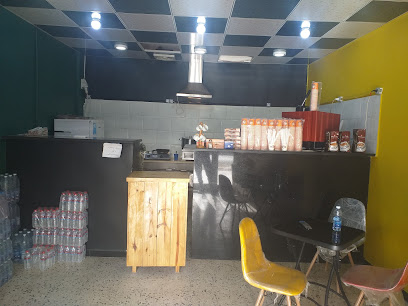
مطعم فورتي فور 44
2.9 km
Discover the authentic flavors of Libya at مطعم فورتي فور 44 in Khoms - a culinary gem for every tourist.

سندوتشات المقصف
2.9 km
Sunduqshat Al-Maqsaf offers delicious fast food sandwiches that reflect the vibrant flavors of Libya in a casual setting perfect for all visitors.

مقهى سفلي م
2.9 km
Savor authentic Libyan cuisine at مقهى سفلي م in Khoms – where every dish tells a story.

Blue Restaurant
2.9 km
Discover the flavors of Libya at Blue Restaurant in Khoms, where traditional dishes meet warm hospitality and stunning coastal views.

الكبيتانو
2.9 km
Experience authentic Libyan flavors at الكبيتانو in Khoms, where every dish reflects the rich culinary heritage of Libya.

مطعم ماكس
3.0 km
Experience authentic Libyan cuisine at مطعم ماكس in Khoms, where delicious flavors meet warm hospitality.

مطعم الشلبة
3.0 km
Indulge in authentic Libyan flavors at مطعم الشلبة in Khoms – a culinary experience that embodies local culture and hospitality.

مطعم الشام
3.0 km
Experience authentic Middle Eastern cuisine at مطعم الشام in Khoms – where flavor meets tradition in a warm and inviting atmosphere.

Alsham Restaurants
3.0 km
Experience authentic Libyan barbecue at Alsham Restaurants in Khoms – where flavor meets tradition in every bite.

راكان
3.1 km
Experience authentic Libyan flavors at Raakan in Khoms – where tradition meets modern dining in a vibrant atmosphere.

Markets, malls and hidden boutiques
مجموعة النبراس للخطروت والغدائيه
0.2 km
Discover local flavors and essential goods at مجموعة النبراس للخطروت والغدائيه in Leptis Magna, a supermarket that embodies Libyan culture and hospitality.

مقهى لبدة الكبرى
0.5 km
Experience the perfect blend of history and hospitality at Maqha Lubda Al-Kubra, a charming coffee shop in the heart of Leptis Magna.

Magasin de souvenirs
0.5 km
Explore a vibrant souvenir store in Leptis Magna, offering handcrafted treasures and authentic local crafts that reflect the city's rich heritage.

مركز ماكسي داس
1.1 km
Discover modern technology at مركز ماكسي داس, an electronics store in Leptis Magna offering a variety of gadgets amidst ancient ruins.

دلعها لكماليات السيارات
1.3 km
Explore دلعها لكماليات السيارات in Khoms for a unique selection of car accessories that reflect local automotive culture and craftsmanship.

محلات أبناء بوسعدية
1.3 km
Discover the vibrant shopping scene at محلات أبناء بوسعدية in Khoms, where local culture and modern retail converge.

حريبش لصيانة المولدات
1.3 km
Discover Hareebesh: Your trusted partner for electric generator services in the heart of Khoms, bridging locals and tourists with expert solutions.

أنتيكا لتغليف الهدايا
1.5 km
Explore a charming gift shop in Khoms offering unique handcrafted items and exceptional wrapping services, perfect for memorable souvenirs.

النبراس لمواد التنظيف
1.5 km
Discover quality cleaning supplies at Al-Nibras, a prime department store in the historic city of Leptis Magna, Libya, near stunning ancient ruins.

سوق المهاري
1.5 km
Discover the heart of Khoms at سوق المهاري, where fresh produce and local flavors come together in a vibrant market atmosphere.

محل إكتيبي للأجهزة الألكترونية/Mr.Robot
1.6 km
Explore cutting-edge electronics at Mr. Robot in Khoms - your one-stop shop for the latest gadgets and tech accessories.

فلامينقو للهدايا
1.8 km
Explore Flamingo Gift Shop in Leptis Magna for unique Libyan gifts and souvenirs that celebrate the region's rich cultural heritage.

سوق لبده لابناء اوهيبه
1.8 km
Discover the essence of Khoms at سوق لبده لابناء اوهيبه, a vibrant market filled with local flavors and cultural treasures.

متجر الخمس Store Alkoms
2.1 km
Discover Alkoms Store in Khoms for an unforgettable shopping experience filled with local flavors and vibrant culture.
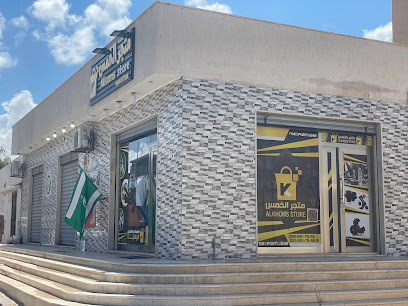
حريبش للمواد الكهرومنزلية
2.2 km
Explore the best of electronics at حريبش للمواد الكهرومنزلية in Khoms, where quality meets exceptional service in a vibrant setting.

Essential bars & hidden hideouts
مقهى سفلي م
2.9 km
Discover the authentic flavors of Libya at Sufli Café in Khoms, where every dish tells a story of rich culinary traditions and local culture.

الكبيتانو
2.9 km
Discover the authentic taste of Libya at الكبيتانو, a culinary gem in Khoms, offering traditional dishes that celebrate local flavors.

عصبان النخلة
3.1 km
Discover the authentic taste of Libya at عسبان النخلة in Khoms, where traditional flavors meet warm hospitality.

Caribou Coffe
3.3 km
Discover the rich flavors and cozy atmosphere at Caribou Coffee in Khoms, the perfect espresso bar for coffee lovers and travelers alike.

شاورما الفحم الخمس
3.7 km
Experience the authentic taste of shawarma at شاورما الفحم الخمس in Khoms, a delightful blend of tradition and flavor.

مطعم يوسف نبة
5.7 km
Experience the vibrant atmosphere and local flavors at مطعم يوسف نبة, a top bar in Khoms, perfect for socializing and relaxation.

مطعم يوسف نبة
5.7 km
Savor the authentic taste of Libya at مطعم يوسف نبة, where every dish tells a story of rich culinary traditions and local hospitality.

صالة المنساز
11.0 km
Experience the charm of صالة المنساز in سوق الخميس/ الخمس, where shopping and relaxation blend in a vibrant atmosphere.

صالة العنود الأفراح والمناسبات
26.2 km
Experience elegance and sophistication at Al-Anoud Hall, Zliten's premier venue for weddings, parties, and corporate events.

محلات ابناء حسن الفاسي
27.0 km
Discover the cozy atmosphere of محلات ابناء حسن الفاسي, a charming lounge in Msallata that offers local refreshments and a welcoming environment.

محلات ابناء حسن الفاسي
27.0 km
Experience the charm of محلات ابناء حسن الفاسي, a cozy lounge in Msallata perfect for relaxation and enjoying local flavors.

مقهى برستيج
28.6 km
Discover the vibrant atmosphere of مقهى برستيج, Zliten's premier hookah bar, offering a diverse selection of flavors and a relaxing ambiance.

محل النخله لبيع السجائر
29.5 km
Experience the vibrant atmosphere of The Palm Shop in Zliten, a local bar where Libyan hospitality meets relaxation and socialization.
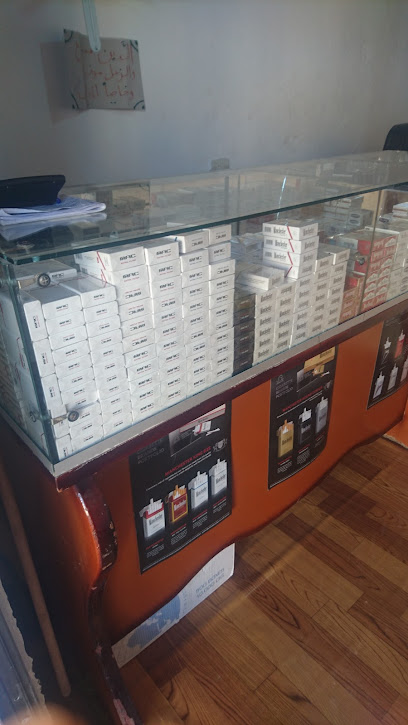
قصاب خالد
29.6 km
Explore the rich flavors of traditional Libyan cured ham at قصاب خالد in Zliten, where culinary heritage comes alive with every bite.

غموقة ماركت للحلويات
31.2 km
Experience the delightful flavors of traditional Libyan sweets and beverages at غموقة ماركت للحلويات in Zliten, a must-visit confectionery bar.




